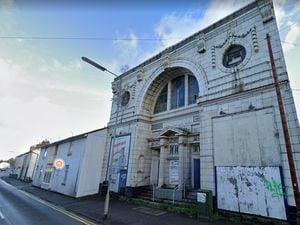Plans to demolish 101-year-old cinema met with dozens of objections
Plans to demolish a 101-year-old theatre and cinema have been met with dozens of objections.

More then 50 objections have been lodged to proposals to knock down the former Sandonia theatre in Sandon Road, Stafford.
The Theatres Trust has also voiced strong opposition to plans to pull down the building.
The application has been submitted to Stafford Borough Council after demolition work was halted in June.
Bulldozers moved onto the start and began demolition , prompting enforcement from the borough council to halt the work.
The theatre opened in 1920, and was converted to a cinema three years later, although it continued to stage live shows.
It became a bingo hall in 1962, and was later used as a snooker hall before its closure about 20 years ago.
Four letters have been submitted in support of the proposals.
Tom Clarke, national planning adviser to the Theatres Trust, said the organisation had not been informed about the plans, despite there being a legal obligation to consult the organisation.
Mr Clarke said he strongly objected to the proposals, saying the theatre was a rare example of an ornate theatre from this era.
"The building is long and narrow with a grand white stone façade with semi-circular arch and circular windows either side with a garland and figure above each," he said.
"The auditorium had a long barrel-vaulted ceiling with parallel ribs which in later years was masked above the false ceiling.
"The proscenium arch was decorated with a large plaster motif depicting two female figures and the circle front showed Staffordshire knots. This type of design reflects early purpose-built cinemas of the few years preceding World War I, so the Sandonia is unusual in that respect as having been apparently purposed foremost as a theatre demonstrated by its significant theatrical infrastructure.
"It was also a time of little money for new theatre projects, especially of a larger scale and outside of London."
Mr Clarke said the fabric of the building had suffered as a result of the unlawful demolition work carried out earlier this year.
"We understand much of the internal decorative plasterwork had already been removed but the proscenium figures were believed to remain," he said.
"This has now been confirmed by images which show the illegal works have exposed them to the elements."
Mr Clarke said that even if redevelopment for alternative uses was the only realistic option, there was a compelling case in retaining at least the front facade of the building.
"This must be explored further and alternative options for this site put forward before a decision is made on any irreversible demolition works."
One resident, who objected to the scheme, said the Sandonia was part of the architectural history of the area.
"This building frontage should be kept and restored as part of any development," adding that the building behind the frontage was of less importance.
"I can only image some hideous, soulless flats will take its place and this would be a loss to the area."
Another resident, from Eccleshall Road, said: "The loss of the building on this site would be a loss to the character of the area.
"Attempts must be made to preserve at least the front section ticket hall with an alternative use found for the site."
Another resident described the frontage as an "historical masterpiece".
But a resident living opposite the property in Sandon Road supported plans to demolish the building.
"We have lived opposite this build for the last 12 years and has always been an eyesore, it has caused us problems as it has been derelict," the resident wrote.
"We have often asked for it to come down and build some new houses on the plot."





